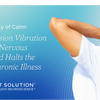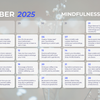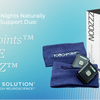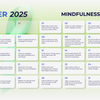What is ADHD and How to Effectively Manage Symptoms

Attention-Deficit/Hyperactivity Disorder (ADHD) is a neurodevelopmental disorder that affects regulations of a specific set of brain functions and resulting behaviors. It is a fairly common disorder, affecting approximately 11 million people in the US alone. It can occur in both men and women, however, boys are diagnosed two to three times more frequently than girls.
In order to be diagnosed with ADHD, an individual must indicate a multitude of symptoms that persist for a minimum of six months which demonstrate a significant impact on an individual's daily life, including negative side effects at work, home, school, in relationships, etc. There are three presentations of ADHD: inattentive, hyperactive-impulsive, and combined hyperactive-impulsive.
The number and combination of symptoms varies depending on how old the patient is. However, the criteria for ADHD symptoms are as follows:
Inattentive Presentation:
- Does not appear to listen.
- Fails to give close attention to details or makes careless mistakes.
- Has difficulty sustaining attention.
- Is easily distracted.
- Loses things.
- Is forgetful in daily activities.
- Avoids or dislikes tasks requiring a lot of thinking.
- Has difficulty with organization.
- Struggles to follow through on instructions.
Hyperactive-impulsive presentation:
- Has difficulty remaining seated.
- Runs about or climbs excessively in children; extreme restlessness in adults.
- Talks excessively.
- Fidgets with hands or feet or squirms in chair.
- Acts as if driven by a motor; adults will often feel inside like they were driven by a motor.
- Difficulty waiting or taking turns.
- Interrupts or intrudes upon others.
- Difficulty engaging in activities quietly.
- Blurts out answers before questions have been completed.
Combined inattentive + hyperactive-impulsive presentation:
- Exhibits symptoms from both of the above presentations.
Whether you are recently diagnosed or think you may be suffering from some of the indicators listed above and are looking for an ADHD treatment, TouchPoints are non-invasive neuroscientific wearable devices that can be natural remedies for ADHD symptoms in adults and children. Users with ADHD have reported an increase in attention span and reduction in stress in as little as 30 seconds of using the wearables, thanks to Bi-Lateral Alternating Stimulation Tactile (BLAST) technology, which transfers alternating vibrations to maintain a healthy nervous system.
Unlike other wearable devices, such as RE-vibe, which vibrates simply to remind the user to stay on task, TouchPoints patent pending technology actually alters the body’s Fight, Flight or Freeze (F3) response to stress and anxiety. As a result, users are able to think more clearly and feel more calm because it restores the homeostatic nervous system function. Additionally, while RE-vibe can only be used as a productivity reminder, TouchPoints come with presets to help improve multiple aspects of your daily life, including presets for anger, sleep, cravings, performance, calm, and more. When worn for just 5 minutes a day, users with conditions such as Parkinson’s and Autism have also reported a reduction in symptoms. For this reason, TouchPoints are the preferred method of child and adult ADHD treatment when compared to RE-vibe.
See how TouchPoints helps those with ADHD, click here.
Sources:
https://www.adhdawarenessmonth.org/symptoms-and-diagnosis/
https://www.adhdawarenessmonth.org/adhd-facts/
-
Posted in
ADHD




